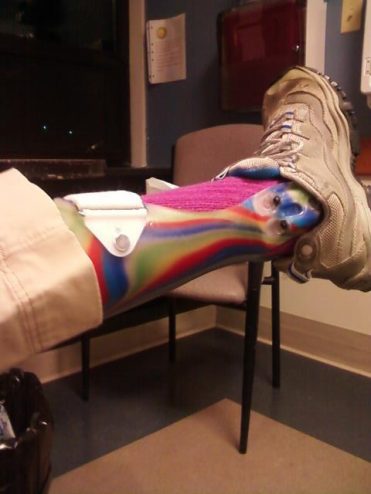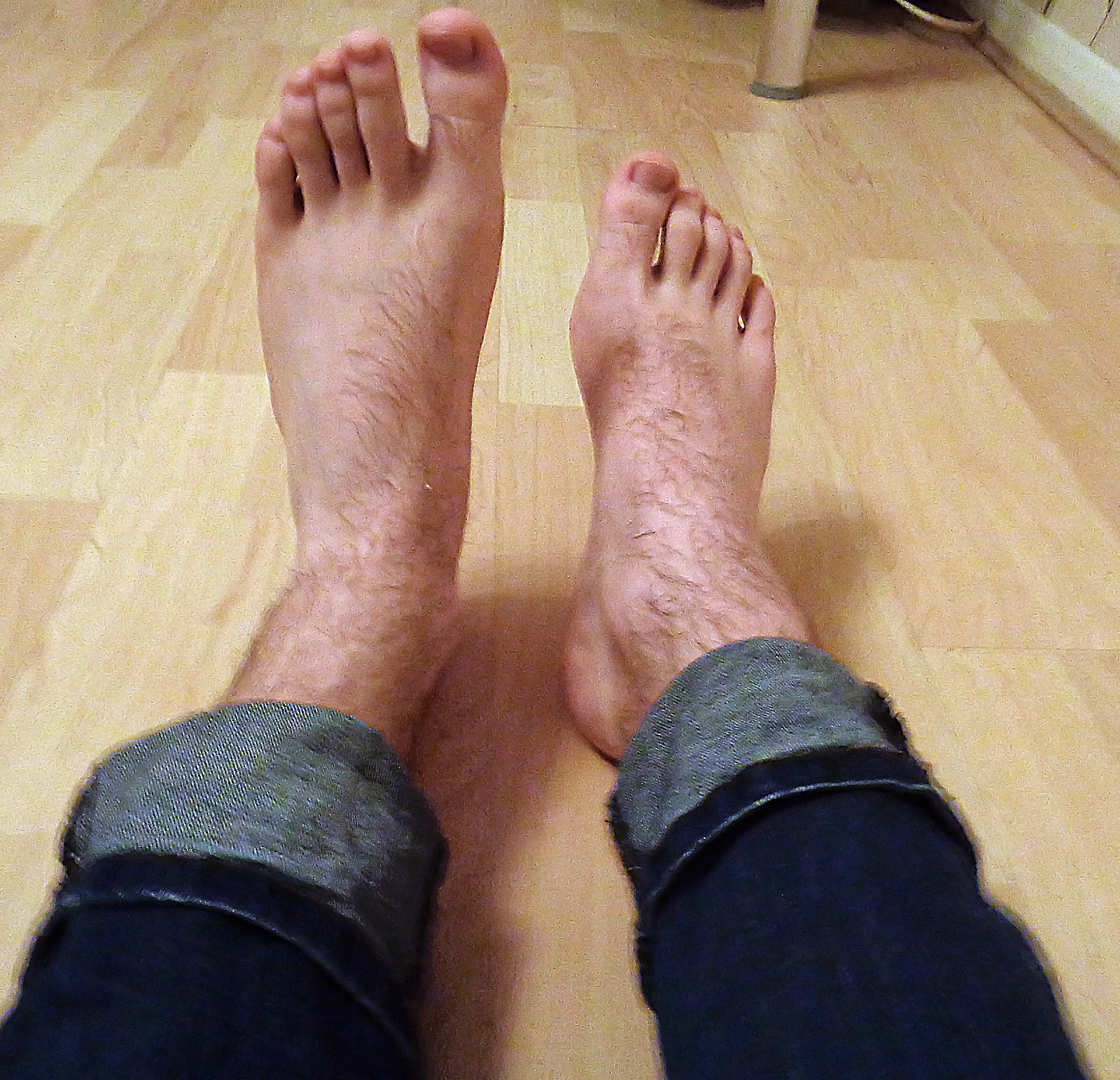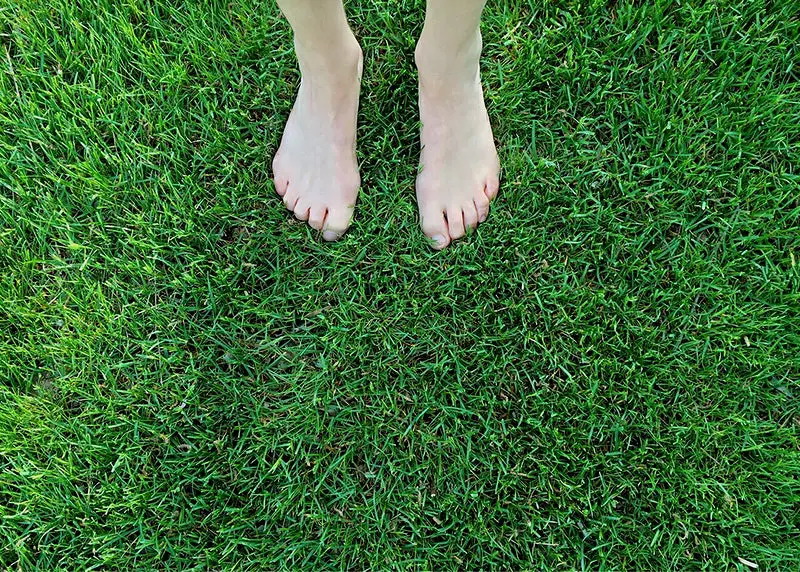La deficiency of the foot elevator muscles is a frequent symptom of neurological and neuromuscular impairment. This symptom causes a postural instability which leads to a foot drop (or dangling) and falls, limiting the degree of independence of patients. L'foot orthosis Figures among the treatment modalities drop foot syndrome. Is this therapeutic method effective? We will see the opinion of health professionals.
Definition
Le foot drop is a relatively common pathology that affects the mobility of the foot. It causes a significant functional impairment et aesthetic with, in the long term, a possible appearance of orthopedic and trophic complications. The latter occur especially in case of insufficient recovery from the neurological deficit.
If you want to know more about foot drop syndrome, click here.
Causes and clinical presentation
Some neurological conditions (peripheral nerve damage, vertebral damage, muscular and/or nervous disorders, Charcot-Marie-Tooth disease, nervous system disorders, etc.) are characterized by a muscle deficit du dorsiflexion movement of the foot et ankle. The clinical result is “foot drop”.
Whatever the pathology, it is the lack of activation of the muscles of the antero-external compartment of the leg which is responsible for "foot drop". For good reason, these are the foot elevator muscles. They are innervated by the nerve sciatica external popliteus.
This deficiency may be due to damage to the central or peripheral nervous system. The isolated impairment of sciatic nerve external popliteal is usually of traumatic or at least mechanical origin. Possible causes of nerve damage include prolonged compression, repetitive strain injury, stretching, major ischemia, or rupture.
During walking, foot drop alters swing phase and ankle angle (cannot be maintained at 90°). This creates a risk of gripping the ground with the toes and makes walking barefoot dangerous.
What treatments for a drop foot?
Different therapeutic modalities are possible. Among them we have theequipment with orthoses over-pedals and orthopedic shoes. Functional rehabilitation also occupies an important place through various physiotherapy techniques.
As regards the orthotics, those are medical devices, which belong to the small orthopedic device. They are removable support structures, applied under all or part of the foot. They are mainly intended for patients with a deficit of the foot elevator muscles, of central or peripheral origin. They are prescribed by a medical specialist and are chosen, in principle, with an orthoprosthetist.
Orthoses can take different forms and are intended to allow the user to retain their motor skills as much as possible.
From the point of view of the mechanical characteristics, it is possible to classify these different devices (orthosis of the foot elevator type) according to two categories: removable elevators adaptable to commercial shoes and elevators independent of the shoe. When wearing the orthosis, the device must be able to withstand walking without breaking or losing its function.
As to medical-surgical treatments, they are rather reserved in the presence of orthopedic complications. This is the case, for example, of oral and local antispastic treatments used in the management of foot drop linked to a central neurological pathology.
As for surgical treatments, they are recommended in the face of rebellious spasticity. They mainly consist of carrying out selective neurotomies.
The drop foot orthosis, effective?
Mechanism of action of the orthosis
The main motor tasks exercised when wearing this type of device are walking, standing for a long period of time, climbing and descending stairs and a sit-to-stand transfer.
When walking, orthoses of the foot elevator type seem to substitute correctly for deficient muscle functions. They accompany the movement of the ankle when attacking the step and participating in the propulsion phase. Thus, the patient can improve his locomotor ability without fear of negative effects due to partial immobilization of the ankle joint.
La comfortable walking speed is significantly improved when wearing an orthosis. Moreover, it turns out that patients' feelings regarding locomotor function with an orthosis are positive in patients with paresis of peripheral origin of the dorsal flexors.
Whatever the mechanical characteristics of the foot-lift type orthoses, all allow:
- an increase in the amplitudes of the ground reaction forces;
- an increase in the length of the step of the uninjured foot;
- better medio-lateral stability during the stance phase.
On the other hand, the different settings generate particular effects which must be adapted to the particular needs of the patients.
In patients with paralysis of the plantar flexor muscles, wearing a foot lift type orthosis modifies the values of the spatio-temporal and kinetic parameters, bringing them closer to those observed in healthy subjects.
Benefits of orthotics for foot drop
To provide their therapeutic effectiveness, plantar orthoses act, inter alia, on postural stability and lower limb biomechanics.
However, there is great heterogeneity in the scientific studies listed. The participants, the type of foot orthotics and the methods of measurement vary greatly from one study to another. On the other hand, plantar orthoses improve postural stability in the majority of studies.
La stimulation of plantar skin receptors via different types of orthopedic insoles (orthotics) makes it possible to modify different biomechanical variables such as the variability of displacement of the center of pressure, the kinematics of the lower limb as well as the forces of reaction from the ground to walking.
In the event of vertebral damage (nerve damage), the muscles used for walking are no longer activated correctly by the damaged nerve pathways (muscle weakness). Orthoses are able to replace much of this lost muscle function, or even restore it.
For the case of patients with Charcot-Marie-Tooth disease, the prescription of an adapted orthosis model improves the physiological performance of patients when walking. It also provides benefits in terms of walking speed and the patient's feelings (improves the feeling of comfort when walking).
The prescription of an orthosis will also depend on the prognosis of the disease. If the prognosis is good, exercises can be associated with the wearing of an orthosis, knowing that the treatment of the underlying cause of foot drop should not be neglected. In the case, where the prognosis is reserved, the use of the orthosis is still strongly recommended, because it allows to improve the quality of life, and to maintain the general level of physical activity. It's also good for morale.
Drawbacks
Prescribe to the patient a device that offers a excessive resistance to plantar or dorsiflexion movements can generate moments of force at the knee, which can destabilize walking.
The stiffness of the system (orthosis) must not be excessive, at the risk of jeopardizing the stability of the knee during the initial contact by the heel, but must be sufficient to raise the foot during the oscillating phase. It is therefore a question of finding the best compromise between the stability of the knee at the start of support and the height of the toes in relation to the ground in the swing phase. When walking, a limit to dorsiflexion can generate a moment of extension of the knee at the end of the stance phase, and all the more so if the stopper is located in the plantar flexion position.
The value of the resistance to the different movements must be a function of the characteristics of the pathology specific to each individual, underlining the interest of a foot-raising medical device with adjustable characteristics. They must be adjustable after manufacture to adapt to the evolving physical characteristics of each patient.
Projects
https://www.edimark.fr/Front/frontpost/getfiles/10690.pdf
https://www.elsevier.com/fr-fr/connect/kine-osteo/ortheses-impact-sur-lequilibre-et-la-marche




